Entities beyond any level of mortal understanding, malevolent forces older than time itself, and probably lots of tentacles…
These are but a few staples of what you can expect in a Cosmic Horror D&D campaign!
Not only must the party contend with the biggest, baddest forces in all of existence, but they must also fight to keep their own sanity.
After all, getting involved in the affairs of such powerful and otherworldly beings tends to have some… side effects…
If you’re looking for some Lovecraftian Horror in your D&D campaign, this is the eldritch knowledge that you seek!
“Ph’nglui mglw’nafh Cthulhu R’lyeh wgah’nagl fhtagn!”
What’s that you say?
No, it’s not gibberish! I’ll translate for now, but I’m sure you will understand in time…
I said: “Welcome to this Guide on Running Cosmic Horror in D&D 5e!”
What is Cosmic Horror?
In asking what Cosmic Horror is, we need to look no further than the person to whom a colossal amount of the genre is credited.
“The oldest and strongest emotion of mankind is fear, and the oldest and strongest kind of fear is fear of the unknown.” – H.P. Lovecraft
Cosmic Horror is often also referred to as Lovecraftian Horror. It’s a genre of speculative fiction that emphasizes the insignificance and randomness of humanity in the face of incomprehensible and indifferent godlike powers. It views mortals more like cosmic fleas: utterly powerless and insignificant.
This is built on the foundation of the fear of the unknown and what might become of us if those things were to become known. It’s the promise of knowledge and of the existence of creatures and entities so terrible that merely beholding them will drive you mad.
The true horror lies in a fear of being swallowed up by the cosmos and lost in an endless expanse of darkness.
Cosmic Horror is often used to describe the works of H.P. Lovecraft and other early 20th-century writers. Perhaps most notable are August Derleth and Robert E. Howard the creator of Conan.
Elements of Cosmic Horror for Your Campaign
While developing and playing in a Cosmic Horror campaign, there are certain elements to keep in mind.
Creating a rewarding Cosmic Horror campaign is a team effort, just like any other campaign. Both players and DMs should take note of the elements below and apply them to their characters, how they role play, as well as the world and atmosphere in general.
This type of horror is more about a vibe than anything. We will discuss some mechanics and “crunch”, but Lovecraftian horror is mostly about the “fluff” and atmosphere.
I do highly recommend picking up Van Richten’s Guide to Ravenloft. It’s an awesome resource and should be helpful with many of these elements of horror.
Here are the ground rules for developing and role-playing in this type of horror campaign:
A Feeling of Insignificance
The most common element of Cosmic Horror is a feeling of insignificance. This feeling is often caused by the realization that humanity is tiny and insignificant in the grand scheme of the universe.
This creates a feeling of existential dread, as the characters are constantly struggling against forces they can never truly understand or defeat.
The idea is to make the players feel like their characters are in way over their heads.
One way to do this is by having them face off against creatures and entities that are far beyond their understanding or capability to defeat.
This could be something as simple as a Lovecraftian monster that they can’t hope to damage, let alone kill. Or, it could be an Elder God that they can’t even begin to comprehend, let alone fight.
You might also create this feeling by having the characters stumble upon ancient artifacts or tomes of knowledge that are beyond their understanding.
The characters might also witness events that are so far outside their frame of reference that they can’t even begin to make sense of them.
Themes and touches like this present themselves more as a type of unstoppable force in a Cosmic Horror adventure.
A Focus on The Unknown or Unknowable
Another common element of Cosmic Horror is a focus on the unknown or unknowable and the fear that accompanies that. This often takes the form of entities or forces that are beyond the character’s understanding, such as aliens, monsters, or gods.
When describing the creatures or artifacts that the party encounters, try to use language that is both vague and evocative. Take the angle of relating what the party is witnessing to something familiar, but then you might even contradict that description as well.
Two plus two does not have to equal to four in a Cosmic Horror campaign. In fact, it might not even equal a number at all!
Your descriptions should highlight the creature’s alien nature, and avoid giving too much information about its behavior or abilities.
This will help to create a feeling of unease and fear in the players, as they won’t be able to rely on their usual methods of understanding and dealing with threats. You want to create a sense of mystery and unease in the players.
It’s also important to remember that, in Cosmic Horror, less is often more.
Don’t try to explain everything away, as this will only serve to lessen the fear and dread that you’re trying to create.
Recommended: 9 Personal Touches for Game Masters
A Focus on The Individual and Their Predicament
Cosmic Horror often focuses on the individual, rather than on society as a whole. You might think of it as a kind of “horror in a bubble”.
This allows for a more personal feeling of fear, as the players can identify with the PCs who are struggling to survive in a hostile environment.
It’s important to remember that, in Cosmic Horror, the characters are not heroes. They are not Chosen Ones who are destined to save the world. They are merely people who are struggling to survive in a hostile and uncaring universe.
This doesn’t mean that the characters should be hopeless or helpless, but they should feel like they are in over their heads.
It’s a very fine balance that you have to strike as a DM.
The focus on the individual also allows for a greater feeling of isolation, as the characters are often cut off from the rest of society. This can be done physically, such as by having them stranded in an isolated location, or psychologically, such as by having them suffer from a mental break that cuts them off from reality.
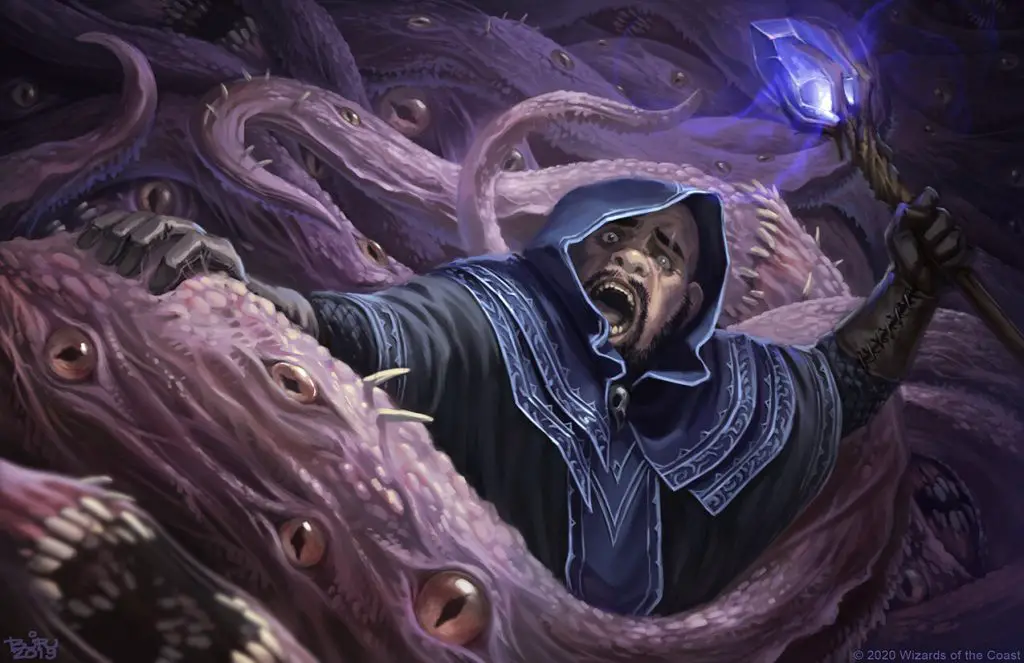
A Sense of Cosmic Apathy or Indifference
One of the most unnerving things about Cosmic Horror is the sense that the universe is indifferent to humanity’s plight.
In most horror, there is at least some kind of malevolent force that is behind the events that are taking place. But in Cosmic Horror, there is often no such force. The universe is simply indifferent to the characters’ suffering.
This can be conveyed in a number of ways.
One is through the use of Lovecraftian monsters, which are often described as being beyond human comprehension. They aren’t motivated by anything that the characters can understand, and they don’t care about the suffering that they cause.
Another way to convey this is through the use of Elder Gods. These beings are often described as being so far beyond human understanding that they might as well be apathetic. They aren’t malevolent, but they also don’t care about the characters or their plight.
A Slow-Burn Atmosphere Of Suspense And Fear
Cosmic Horror stories have an atmosphere of suspense and fear. This is usually created by the slow build-up of tension as the story progresses and players learn more about the strange and dangerous elements at play.
One way to create this atmosphere is to use a “creeping dread” mechanic, in which the players gradually learn more about the Cosmic Horror element that they are facing. This can be done through dreams, visions, or simply by having the characters overhear snippets of conversation.
As the players learn more, they should start to feel a sense of unease and fear. This should then culminate in a scene or encounter that is truly horrifying.
Players should feel like they are in over their heads and that they are facing something that is beyond their understanding. Cosmic Horror is not about fighting and defeating the enemy; it’s about surviving in a hostile universe.
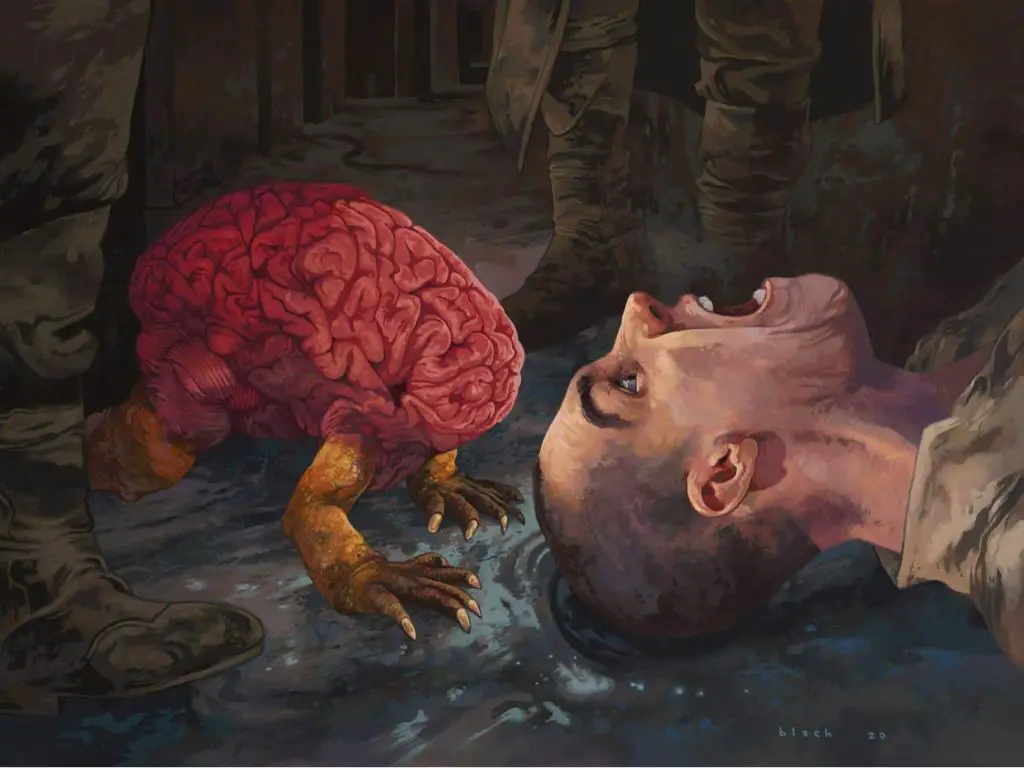
Eerie Atmospheric Settings
Eerie, atmospheric settings are another vital element of Cosmic Horror. These settings are often dark and foreboding and may evoke feelings of fear or dread.
They should also be infused with a sense of mystery, making them all the more unsettling.
Some common setting elements that can be used to create an eerie atmosphere include:
- Isolated locations: Cosmic Horror often takes place in remote or isolated locations, such as an abandoned city, a deserted island, or a remote research facility.
- Dark, foreboding environments: The environment should be one that is dark and foreboding. This might be a mist-filled forest, a storm-ravaged sea, or a cave that echoes with strange noises.
- Strange and bizarre architecture: The architecture in Cosmic Horror settings is often strange and bizarre. This might be an ancient temple that is filled with unsettling carvings, or a more modern building that seems to defy the laws of physics.
- Unnatural lighting: Cosmic Horror settings are often illuminated by unnatural lighting, such as an eerie green glow or a dim, flickering light for which there is no clear source.
- Dangerous wildlife: The wildlife in Cosmic Horror settings is often dangerous or hostile. This might be animals that are infected with a strange disease or plants that emit poisonous gas.
These are just some of the elements that can be used to create an eerie, atmospheric setting. Use your imagination and let your creativity run wild!
Not only do you not need explanations for things that the characters encounter in a Cosmic Horror game, but the less logical sense these details make, the better!
Insanity
Insanity is a central theme in many Lovecraftian Horror stories. Characters who are confronted with the horrors of the universe often go mad as a result.
It’s simply too much for the mind to take in. However, it also serves to ratchet up the tension in a story, as the player knows that any character could become insane at any moment.
The PC’s minds are very vulnerable and fragile. As the adventure moves forward, PC death becomes less of a worry and their sanity becomes a priority.
One way to represent insanity in D&D 5e is through the use of the Madness condition. This can be caused by a number of things, such as witnessing a horrifying creature or attempting to decipher a tom of eldritch knowledge.
It’s not enough to escape a Cosmic Horror campaign with your life. The real struggle is to escape with your sanity!
You Might Like: Running Horror Games in D&D
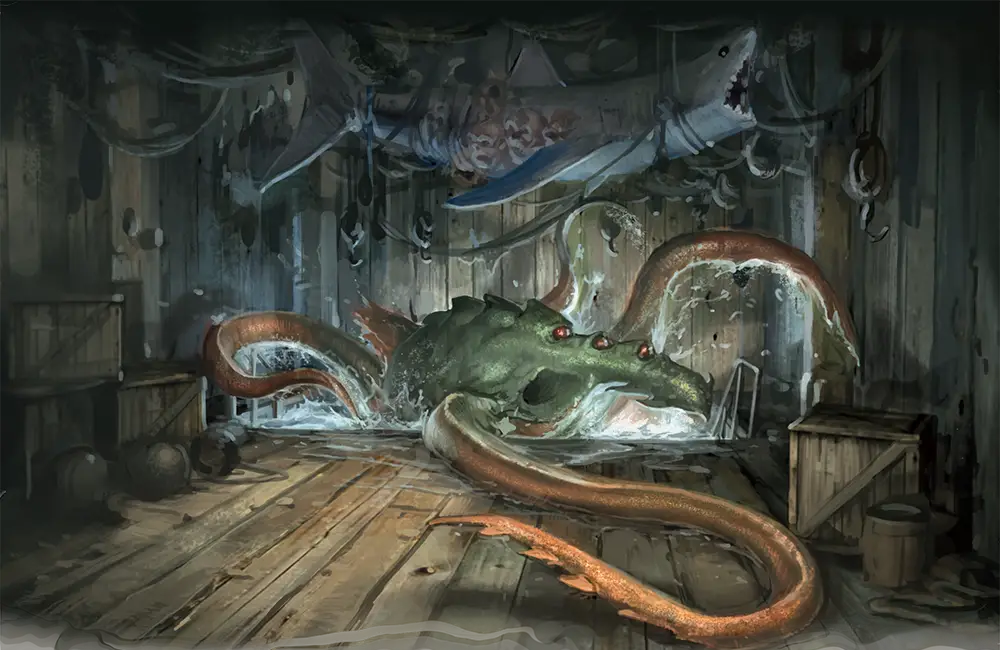
How to DM Cosmic Horror for Your D&D 5e Campaign
We’ve laid out some important elements for a Cosmic Horror campaign, now we’re going to break them down for the DM.
The first rule of DMing Cosmic Horror is discussing the campaign with your players.
Cosmic Horror is not for everyone. Some might find it too bleak and depressing, some might not like less powerful characters, and others just might not like the genre itself. This type of horror (and horror in general) is still a pretty diverse genre and tastes do vary.
When you’re running your Session Zero, make sure to get everyone’s “buy-in” to the themes that you’re going to be exploring.
While that’s important for any campaign (horror or not), it’s absolutely vital to do Cosmic Horror well. You want to have a party of characters that reinforce and explore the themes being presented.
Introducing Cosmic Horror into Your Campaign
Before we dig into the nuts and bolts, it should be noted that a game master who runs a Cosmic Horror campaign is going to have their work cut out for them.
Dungeons masters are most likely going to have to modify some of the systems within the game itself as well as do some worldbuilding to really tie everything all together.
For example, you’ll need to consider things like:
- How accessible is magic?
- How will you handle Clerics? (Heck, do deities even have influence against these forces?)
- What’s a good way to handle sanity
- How to make PCs less empowered in a way that is still fun for everyone
Additionally, an important question to answer early on is how much Cosmic Horror is going to be in your campaign.
Will it be episodic and rear its ugly head occasionally? Or will this be a full-on, non-stop tour de force Lovecraftian campaign? Deciding on this aspect of your campaign will decide how much work you, as the DM, will have to do upfront.
Note that you should also take the time to explain any changes to the core rules and inform the players of any homebrewed or 3rd party additions to the rules.
Being upfront and clear with the players from the get-go goes a long way toward not frustrating or angering players.
Remember: you’re all building these Cosmic Horror themes together. It shouldn’t be a case of “DM vs Players” but should instead see everyone contributing to what is being explored.
Let the players know that their characters aren’t going to escape the campaign unscathed. PC death or incapacitation is very likely and, for the Cosmic Horror theme to work, their characters are more vulnerable than they’d be in a typical campaign.
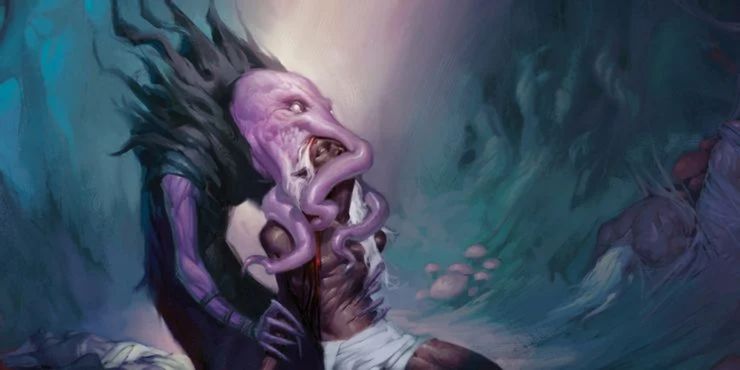
Useful Tips for DMs To Pull Off a Cosmic Horror Campaign
So we’ve gone over the elements of Cosmic Horror and what makes it work. Now let’s look at some specific tips that Dungeon Masters can use to bring it to life.
Feel free to pick and choose only what you want here. By no means do you have to include every one of these tips in your game.
Even within the genre of Cosmic Horror there are countless ways that you can custom tailor it to your group. If there are certain themes or feelings that you would rather include or avoid, by all means do so!
These tips are primarily geared towards the “classic” Cosmic Horror experience. However, these tips should at least give you inspiration or things to consider as you find your own unique ways to terrify your players.
Take the Power Away from Player Characters
This is perhaps the most difficult part of pulling off a successful horror campaign of this nature. How do you make PCs feel less empowered and not in control but in a way that’s still fun and engaging?
D&D 5e lends itself to empowered characters who progress exponentially. While this is usually incredibly fun, it can be a bit of a problem for a Lovecraftian campaign.
There are many ideas to pull this off (far too many to cover in this article) but we will touch on a few.
The Survivor class in Van Richten’s Guide to Ravenloft is an interesting idea. Survivors are equivalent to commoners and not quite as powerful as other classes.
If you’re looking to run a shorter Cosmic Horror adventure (one to four sessions), playing these types of characters who focus more on simply surviving rather than becoming epic heroes is an excellent and quick solution.
Regarding Magic in Cosmic Horror
A low magic campaign is another option, whether this is done by not allowing spellcasters or by making magic scarce and costly. However, low magic campaigns are often a turn off for most players, so you might instead allow magic but have it draw on characters’ overall sanity, long-term well-being, or both.
Clerics can be another problem. Deities tend to give players the comfort that everything is going to be OK. Deities tend to negate the whole idea and foundation of this type of horror campaign which is based on Cosmicism.
One interesting approach would be to allow Clerics but treat them very much like spellcasters: their prayers come with a price. This problem can become a positive as far as plots go.
Perhaps it wasn’t Lathander answering the prayers of the party’s cleric all this time. Maybe it was an evil eldritch entity such as one of the Great Old Ones.
As the Cleric’s worldview is shattered, it’s up to them if they continue to reach out at the risk of their own sanity and soul.
Magic items are easy enough to control as the DM to not be a problem. Simply making them extremely rare and costly to obtain is an easy fix.
Additionally, using magic items might also come with a type of hidden cost or risk, especially if these magic items are actually eldritch artifacts.
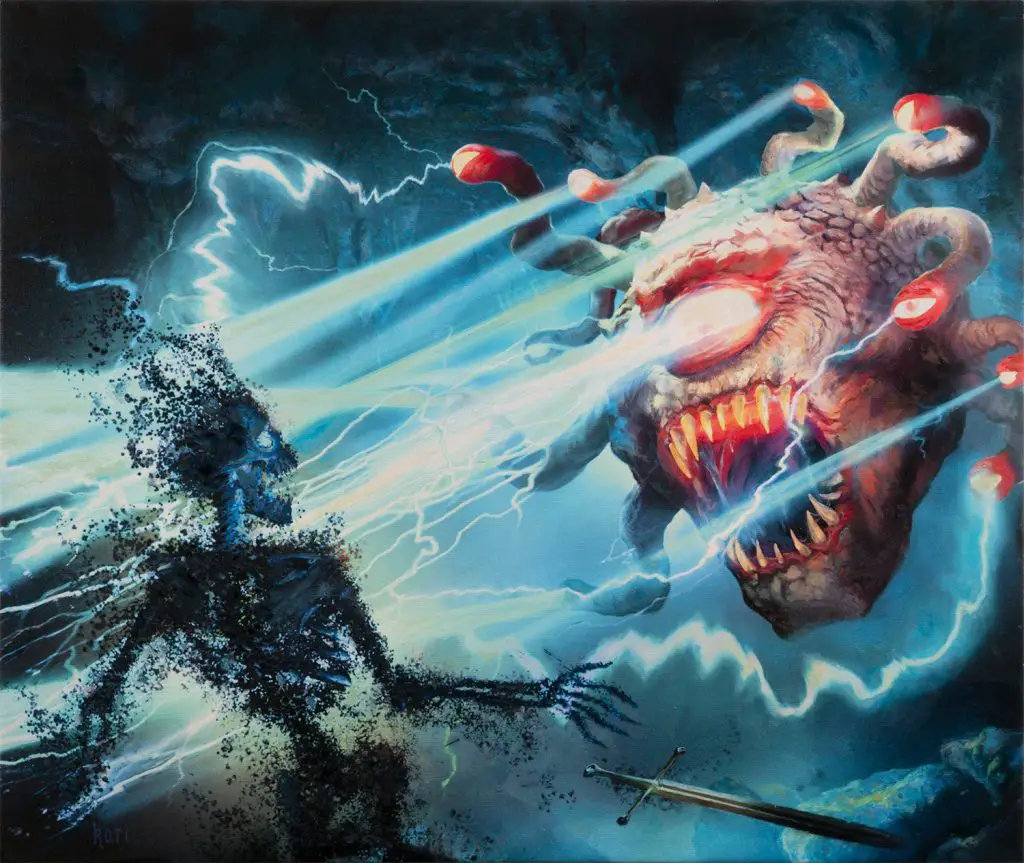
Understand the Genre
If you’re going to run a Cosmic Horror campaign, it’s important that you understand what makes the genre unique.
Read some Cosmic Horror stories, watch some Cosmic Horror movies, and get a feel for what kind of atmosphere you want to create.
Keep in mind it’s very rare to find films and stories set in medieval fantasy worlds. Look to films like Alien, the Thing, At the Mouth of Madness, and IT for inspiration then retrofit those concepts into your D&D world.
For example, Alien is a movie about average, vulnerable humans trapped in a spacecraft with an alien that is way beyond their scope to handle.
The techniques and reveals in that film are a masterclass in what makes the genre work and can be easily applied to your D&D game.
You don’t need to be in space for those techniques to still work. The same feelings can be achieved on an abandoned ship in the middle of a dark and mist-covered ocean or in an ancient, sunken temple.
You Might Like: The 6 Best Books That EVERY DM Should Read
Establish the Tone Early On
One of the most important things for a Dungeon Master running a campaign is to establish the tone early on.
Ultimately, horror is all about atmosphere and Cosmic Horror is certainly no exception. Make sure that your descriptions are evocative and create a sense of unease, dread, and fear in your players.
Make sure to use descriptive language when describing the environment, NPCs, and monsters. Highlight how “off” things are and try to use comparison when describing things to further highlight how alien they are.
A Mind Flayer is not “a humanoid figure with an octopus-like head.” Instead, it’s “a tall, thin creature with a face covered in slimy tentacles that writhe back and forth like an octopus, however the two large and jet-black eyes on the creature’s face stare intently into your very soul as a whispery voice begins to echo in the back of your mind…”
Additionally, use NPCs who are unsettling in some way.
This could be anything from their appearance to their mannerisms to their motives. The goal is to make your players feel like they can’t trust anyone and that everyone could be hiding something sinister. It also lends itself to paranoia and isolation well.
Another way to establish the tone is to use music, sound effects, and lighting that create a sense of unease.
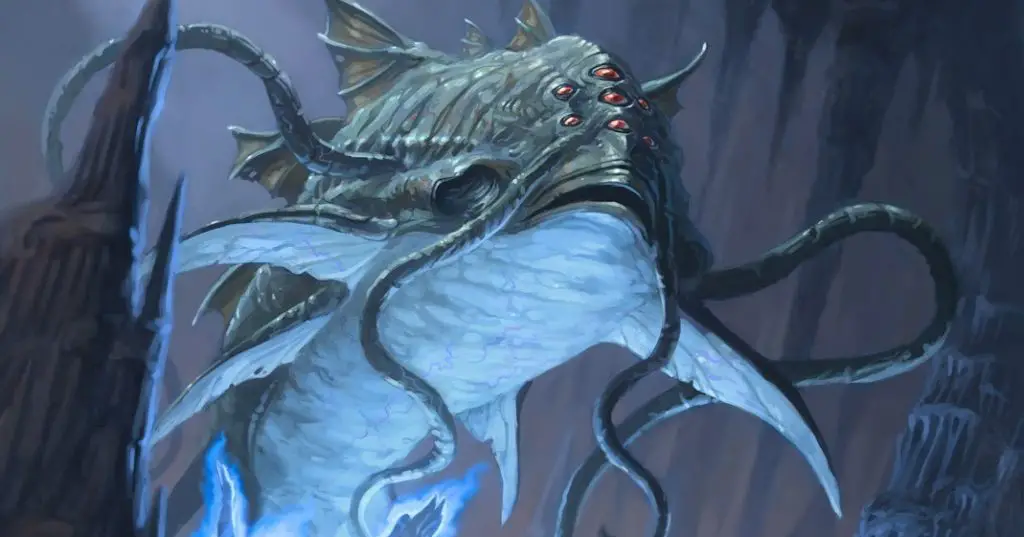
Use Unfamiliar Creatures, Settings, and Concepts
A great way to create a sense of unease in your players is to use unfamiliar monsters, settings, and concepts.
Introducing Lovecraftian monsters that are unlike anything they’ve ever seen before is a no-brainer. Aberrations, strange beasts, the undead, and demons work best.
Aberrations, for example, not only appear unsettling but they also typically have alien motivations that PCs should have trouble understanding.
Try and avoid standard fare with your creatures. The less the players know, the more tension and fear can present themselves.
Avoid straightforward Gothic horror as well. Change the vibe of your undead to be more in line with the Cthulhu Mythos. Not every vampire needs to be Gothically influenced and could instead be the result of an alien mutation spreading through an area.
Strange settings for Cosmic Horror adventures and mysteries are much easier to accomplish in D&D. Dungeons, lost temples, ancient ruined civilizations, and alternate planes are already a core part of the game.
As for concepts, something like a sanity point system would fit that criteria.
By making things unfamiliar, you can help to create a sense of tension, fear, and dread in your players. Playing around with existing concepts and mechanics and reskinning them to better fit the story you’re telling is a huge part of the fun when running Cosmic Horror adventures!
Keep Things Mysterious
In a Cosmic Horror campaign, it’s important to keep things mysterious. The less your players know about what’s going on, the more scared they’ll be.
Be careful not to give away too much information at once, and try to leave things open to interpretation. Ambiguity rules this type of campaign. Five players who perceive a situation in five different ways only adds to the mystery and tone of the adventure.
It’s also important to remember that knowledge is power. The more your players know, the less afraid they’ll be. So, try to keep things as vague as possible.
This is easier said than done, as you need to give your players enough information to move the story forward. As a DM, this is the main juggling act of running Cosmic Horror. But if you can find a happy medium, you’ll be on the right track.
If you’re stuck, try to think about what would make the situation more scary if you were in your players’ shoes. Where is the fun at and what would it take to get the party there?
If the party is looking into mysteries, a small whisper can go a long way. If they are simply trying to survive, what kind of threat might motivate them to naturally move in that direction?
Build Up to the Reveals
While it’s important to keep things open-ended, you also need to build up to the reveals slowly so that they have maximum impact. If you reveal too much too soon, it will take away from the impact of later reveals.
Instead, try to drop hints and clues throughout the campaign so that your players are slowly piecing things together until they finally reach the big reveal.
The mystery and “detective work” of putting clues together is a huge part of the Cosmic Horror experience.
This is another balancing act that can be difficult to achieve, but it’s important to try. If you can master it, your Cosmic Horror campaign will be all the more effective for it.
Create a Sense of Isolation
Another important aspect of creating a successful Cosmic Horror campaign is to create a sense of isolation. The players should feel as though they are alone in a vast and uncaring universe.
This can be accomplished by making sure that there are long periods of time between encounters, and by minimizing the contact that the party has with friendly NPCs.
That said, you don’t want to make the campaign so isolating that the players get bored. Once again, it’s important to find a balance.
A good way to keep things interesting is to have the occasional friendly NPC appear, but make sure that they are few and far between. This will help to remind the players that there is some hope in the world, even if it seems like they’re all alone.
Make sure to also include a lot of empty space in your setting. This can be literal empty space, like a desert or a void, or it can be metaphorical empty space, like a city with no people in it.
Either way, the goal is to make the players feel small and insignificant.
Another way is to cut them off from civilization completely, the PCs are on their own and there is no help or support. “Horror in a bubble” works great for these types of campaigns and can be achieved by creating your own Domain of Dread.
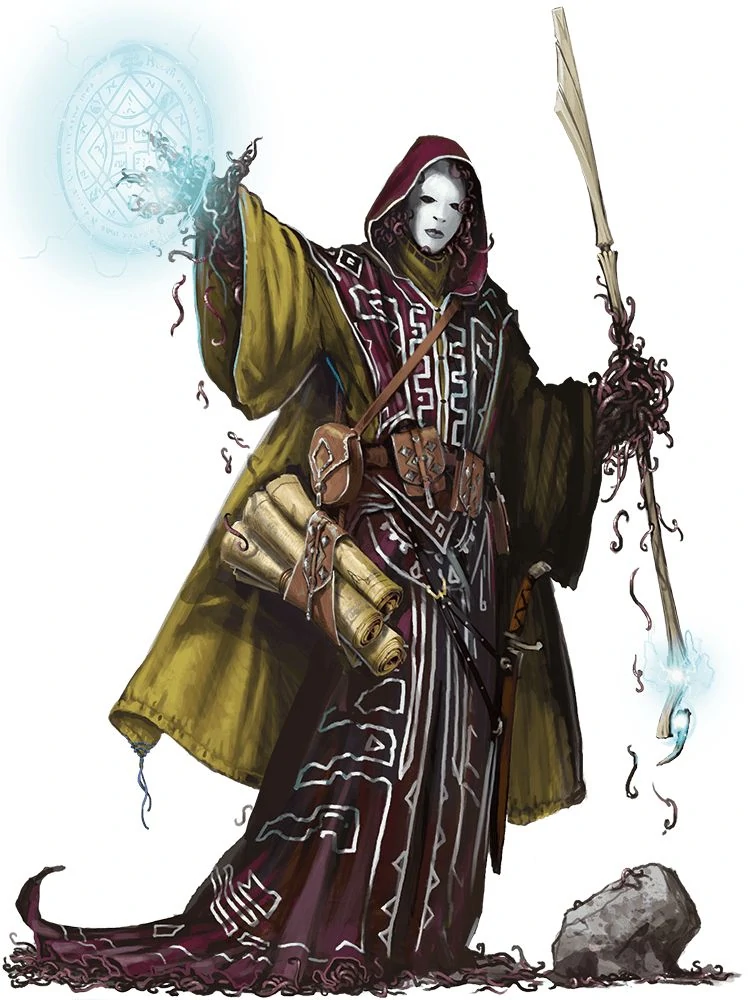
Death Happens
In a Cosmic Horror campaign, it is perfectly acceptable and virtually expected for characters to meet an untimely end. It’s the nature of the genre and if handled correctly can also move the plot forward.
It also scares the players in your campaign, literally.
It is important to remember that death is not necessarily permanent in a Cosmic Horror campaign. Spells like Resurrection and Raise Dead may be available to bring back fallen PCs.
However, it should be rare and come with a price, a steep price.
Perhaps taking some inspiration from Pet Sematary would make things interesting. The idea of tainted PCs who are abominations of their former selves is a great way to impress upon players that everything comes at a cost.
Plus it makes the game that much creepier.
Use Sanity Mechanics
Many Cosmic Horror campaigns make use of sanity mechanics in order to simulate the effects of exposure to eldritch abominations and knowledge on the human mind.
These mechanics can take many different forms, but typically involve some sort of point system that tracks how close a character is to going insane.
Whenever a character witnesses something particularly horrifying or comes into contact with an otherworldly being, they may lose sanity points. If their sanity points ever reach zero, then they become permanently insane.
The game master will most likely have to do some work here, or look to 3rd party materials for a sanity system that works for Cosmic Horror. The madness system in the 5e DMG can be used but it leaves a lot to be desired in this type of horror campaign.
Related: Madness in D&D 5e Explained
Keep Things Open-Ended
One of the hallmarks of Cosmic Horror is that it is often open-ended and unresolved. Things happen that cannot be explained by logic or reason, and there are usually no tidy resolutions.
As such, it’s important to keep things open-ended in your campaign as well. Don’t give your players all the answers; let them piece things together for themselves and come up with their own theories about what’s going on.
In most campaigns of this type there is no happy ending. A temporary victory is often the best that a party can hope for. The PCs aren’t going to save the universe but they might save a village or at least delay the inevitable.
This feeling of unresolved answers and temporary victories lends itself perfectly to Lovecraftian horror.
End With a Bang
A Cosmic Horror campaign should always end with a bang. The big reveal should be shocking and horrifying, leaving your players reeling. And, once the dust has settled, make sure to take some time to debrief with your players.
I’ve got another article all about Campaign Aftercare that I would greatly encourage you to check out. It’s made a huge difference in my groups and I think it’s a huge part of what has helped us stay together and excited for the next, fresh adventure time and time again.
Cosmic Horror can be a tough genre to GM, and it’s important to make sure everyone is on the same page even once the adventure has reached its conclusion.
Discuss what worked well, what didn’t work, and how you can improve things for next time. With a little bit of care and attention, you can make sure your Cosmic Horror campaign is a success and also use the experience to grow as a Dungeon Master!
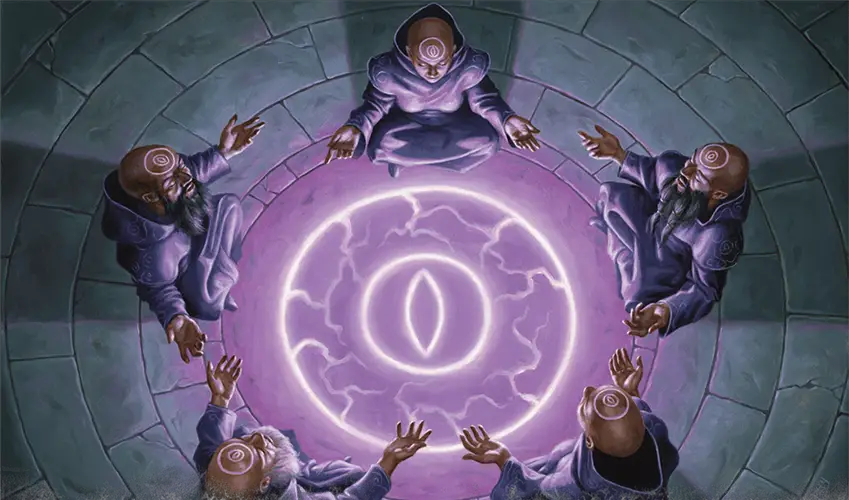
Lovecraftian Monsters for Your D&D 5e Campaign
Mind Flayers, and Aboleths, and Gibbering Mouthers oh my!
There is no hard and fast rule to what monsters you use in your world. Anything weird, unknown, alien in appearance or motivation, or indifferent to the PCs works.
You should also never neglect the more common enemies like orcs, gnolls, and the like. They create a greater contrast when the PCs do encounter something otherworldly.
Of course, the first obvious choice of monsters to include would be anything labeled an aberration. They’re weird, they create tension, and many of them are pretty powerful. The denizens of the Far Realm have Lovecraft written all over them.
Aboleths, Mind Flayers, Grells, Chokers, Gibbering Mouthers, Beholders, Neogi, and the Slaad are just a few of the hundreds of aberrations one could use.
Tweaking the Familiar
As mentioned above undead are also a great adversary, however, they may be too familiar and gothic in nature for the theme we’re trying to create.
But don’t throw the baby out with the bathwater!
If you modify them to fall more in-line with the Cthulhu Mythos, not only will they fit the campaign better but your PCs will become uncomfortable if your ghouls are different than ghouls in the Monster Manual.
Ghouls, ghasts, vampires, liches, ghosts, mummies, and wights all work well in a Lovecraftian campaign.
Demons are also great for Cosmic Horror campaigns, many are grotesque, and most have motivations that are unfamiliar and dangerous to PCs.
Orcus, Juiblex, Zuggtmoy, and a plethora of other Demon Princes plus their minions make great choices.
Strange beasts, humanoids, and monstrosities are excellent choices as well. Monstrosities cooked up in wizard’s towers go a long way toward being creepy and weird. Heck, the Kuo-Toa are classic Lovecraft and are very alien in their own nature.
Overall, try and pick creatures with abilities that frighten, confuse, or otherwise incapacitate PCs. You might even pick creatures that even veteran players are unfamiliar with.
Now that “fear of the unknown” is even expanding beyond the game itself. A player might have memorized a flameskull’s stat block, but what about a flameskull that is instead animated by strange and otherworldly alien forces?!
Cosmic Horror Villains
Cosmic Horror villains come in two forms, the minions and the BIG BAD.
The PCs will almost never face the “Big Bad”, it cheapens the whole idea of Cosmic Horror. The “Big Bad” is behind the scenes and works more like a massive force of nature than an actual villain.
Effectively, the Big Bad is the consequence the PCs are trying to prevent.
Instead, the characters are going to be interacting with the minions of the “Big Bad” 99% percent of the time.
For example, perhaps the party slowly starts to uncover the strange disappearances in the local village over time. It starts with missing people, but then the missing people return as ghouls.
These ghouls are being created by a secretive cult, a cult dedicated to the Elder Evil known as Kyuss. Kyuss serves Orcus, the Demon Lord of Undeath. Now, the Cult of Kyuss and Kyuss seek to complete a ritual that will unleash a more powerful Orcus upon the world that the PCs dwell in.
The PCs will never come face to face with Orcus.
Don’t tell the PCs this let them shake in their boots and cloaks at the thought of facing something so insurmountable. However, at the last minute, they learn they can stop Orcus (at least temporarily) by stopping the cult’s ritual.
The mystery, fear, and utter significance of the main villain is the key to flavoring the entire campaign and to creating the atmosphere. However, exposing the PCs directly to the main villain can ruin the whole campaign.
It’s a thin line that should rarely be crossed.
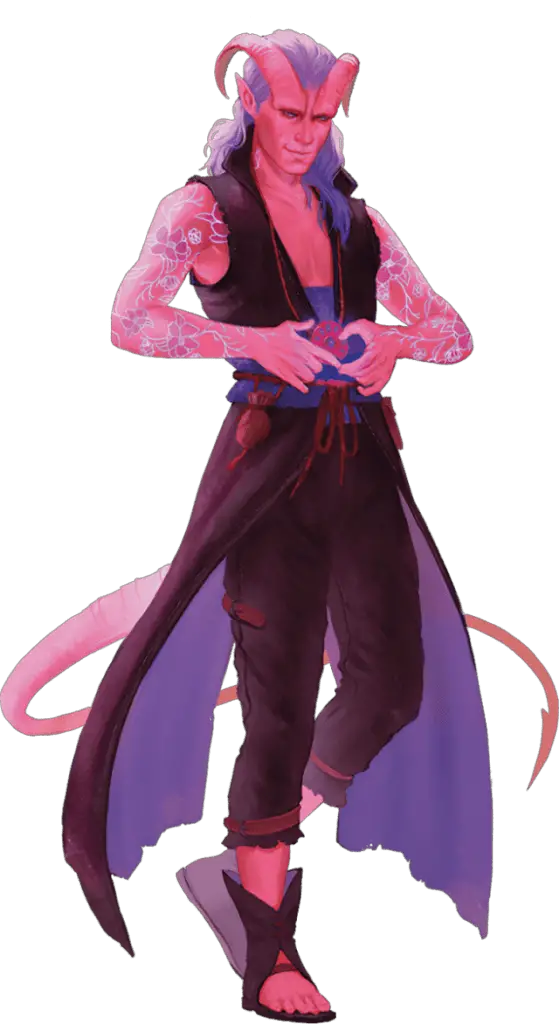
Playing in a Cosmic Horror Campaign
Playing in a Cosmic Horror campaign takes just as much work and thought as being a DM. A horror campaign takes a certain attitude and approach from players and the same is true of a Cosmic Horror campaign.
Players should realize out of the gate is this is not a hack-and-slash type of campaign. Fighting will happen but due to the nature of the genre, it’s heavy on roleplaying as well.
As a player, you should also realize your characters aren’t always the empowered individuals they are in most campaigns. Just surviving is going to be a challenge and players need to realize their PCs have a good chance of perishing.
There is a ton of fun to be had in a Cosmic Horror campaign, but you want to make sure that you’re all working together to hit the right notes.
Some Quick Tips for Creating a Character
A Lovecraftian campaign is not a campaign where characters should have min-maxing their character builds as a priority. While it’s important to have a character that plays well, it’s not the end all be all of enjoying a Cosmic Horror campaign.
It’s more about crafting a character that fits into the story well and moves the plot forward mixed with a lot of roleplaying. It’s about crafting a PC you can get invested in and care about.
Determine what motivates your character. How would your character react to fear? Does your character have any flaws that could be exploited? Any phobias?
You want to give the DM something to work with to get the most out of the game.
Players will most certainly want to invest points into their Wisdom score as this stat is usually what matters in a fear-based campaign. Or choosing classes or races that might have abilities that may help defend the PC against fear-based effects.
Skills like Investigate, Arcana, and Religion are extremely useful for this type of genre which is founded on uncovering the unknown. Be sure someone in the party has proficiency in some of these skills.
One last tip is to create a character that works well with and balances a party because that may be the difference between sanity and insanity and living or dying.
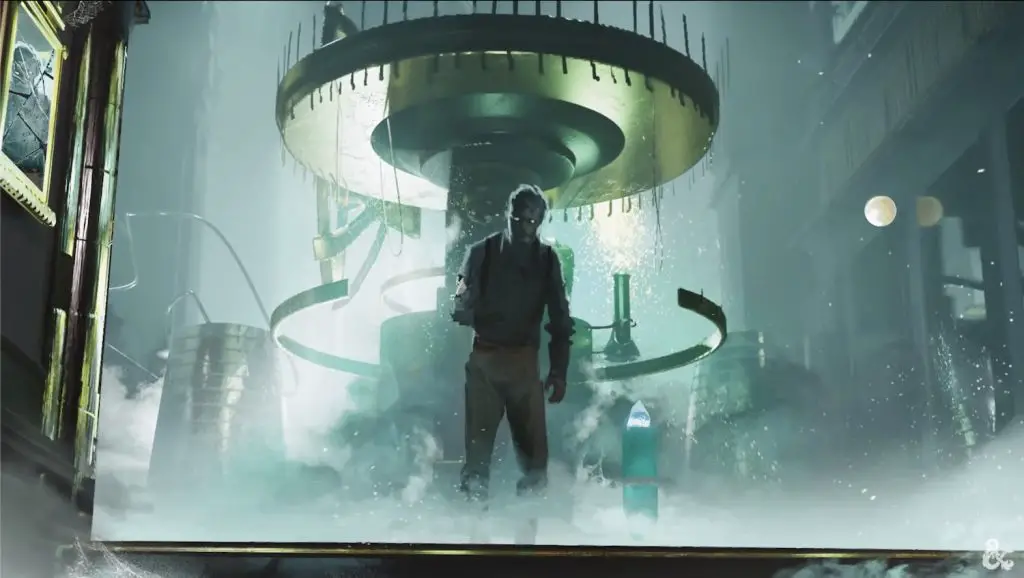
Classes to Consider for a D&D 5e Cosmic Horror Campaign
As mentioned above creating a character for a Cosmic Horror dnd 5e campaign is more about flavor and roleplaying than about maxing out a character build. Finding the right balance is the key. However, given the nature of the genre, you still want to pick an effective class.
Classes with access to abilities that help resist fear and protect against being frightened are probably the most effective classes at earlier levels.
But as we’re wrapping up this article, we’re going to look over each of the classes in D&D 5e and give some ideas for characters that might fit a Cosmic Horror adventure well. If you’ve got other recommendations, let’s chat in the comments!
Artificer
Artificers can do well in a Cosmic Horror campaign and they definitely naturally lend themselves towards a certain “mad scientist” kind of character.
If you play an Artificer, you’re almost certainly the brains of the group or at least one of them!
There is a great deal of potential for an Alchemist Artificer in a Cosmic Horror campaign. In the group’s downtime, such a character would certainly be keen on experimenting with gathered samples of mucus or other specimens that the party acquires.
Artificers tend to shine as engineers who solve practical problems. The reactions and discoveries of an Alchemist could have a massive influence on just how much the party comes to learn about the creatures and artifacts that they are encountering.
Barbarian
It’s not a bad thing to have plenty of muscle for when things get hairy!
While any Barbarian can pretty easily fit into a Cosmic Horror campaign, I’m particularly drawn to the idea of a Wild Magic Barbarian or a Beast Barbarian in such an adventure.
In both cases, the character might have been affected by the strange magic that is so closely connected to aberrations and similar creatures. In fact, the Barbarian’s resilience might have been just enough for them to barely survive an encounter with such a creature!
There’s a ton of potential to really get weird with both subclasses and I’m here for it!
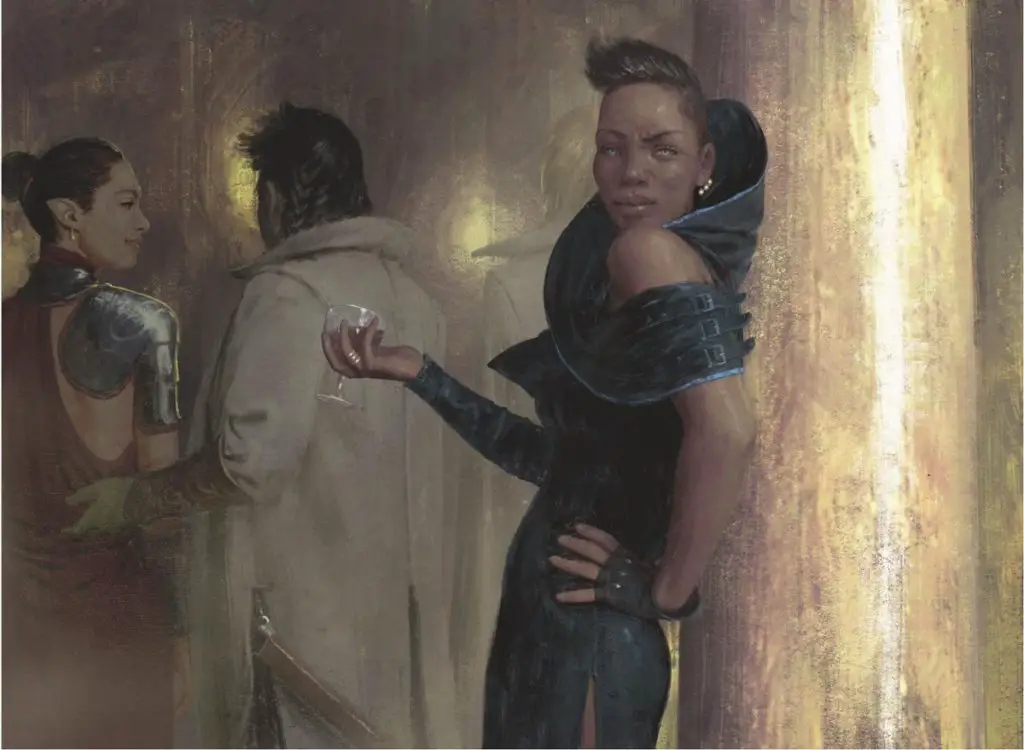
Bard
Bards are known for their versatility and ability to support their allies in a variety of ways. Their magic allows them to buff their allies, heal them, and even charm or frighten their enemies.
Bards also have a number of helpful non-magical abilities and skills that mean they’ll always be able to lend a hand in any situation.
In a Cosmic Horror campaign, a Bard could use their magic to help their allies deal with the psychological effects of encountering Lovecraftian monsters.
The College Of Spirits Bard makes for a flavorful and interesting subclass that greatly plays to the macabre themes of the campaign.
Of course, you might also consider the College of Lore Bard considering how vital being able to gather information in a campaign like this is!
Cleric
Clerics are powerful spellcasters that are able to heal and buff their allies.
They also have access to a number of helpful spells, such as Protection from Evil and Good, which can be incredibly useful for protecting the party from Lovecraftian monsters. Bless is also another great low-level option and is always a much-appreciated buff.
Clerics also have the ability to turn undead, which can be useful for dealing with zombies or other undead creatures that the party may encounter.
You almost can’t go wrong when it comes to choosing a Cleric subclass for a Cosmic Horror adventure. Picking just a single subclass recommendation feels virtually impossible!
Twilight Clerics are incredibly powerful and serve as vigilant protectors of both their party and their community. Meanwhile, choosing something like a Knowledge Cleric isn’t a bad idea for being able to gather information and navigate the intrigue of the adventure.
Of course, something like a Grave Cleric or Life Cleric is also incredibly nice to have when the stakes are as high as they are!
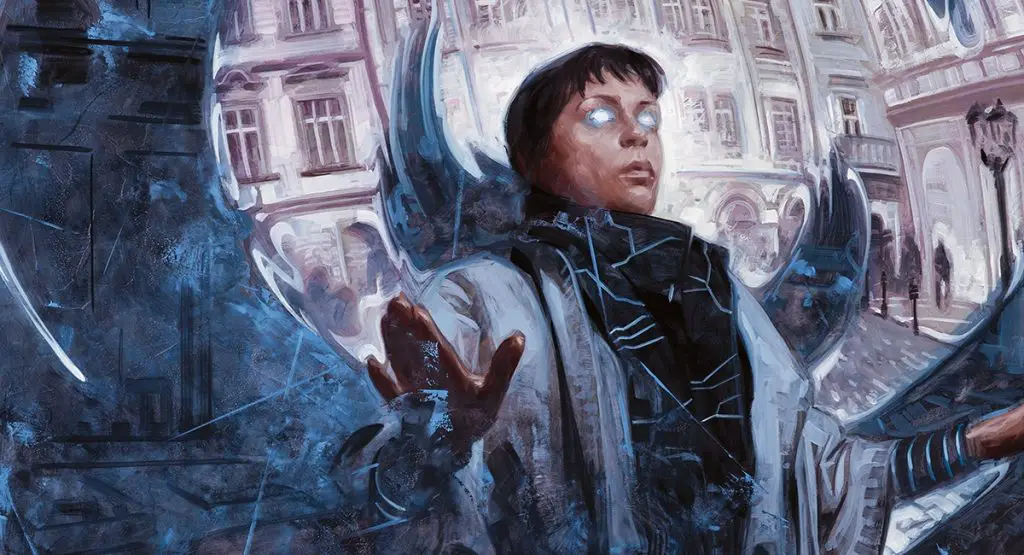
Druid
The effects that the threats in a Cosmic Horror adventure have on the nature around them would certainly draw the attention of any Druid Circle. However, few of these Circles are as qualified to speak on cosmic entities as the Circle of Stars Druid.
Thankfully, Stars Druids are very adaptable and also have a unique way of assisting their party or hindering enemies with the Cosmic Omens that they divine.
Whether you need to focus on taking out enemies or supporting your party, you should have no problem adapting to most situations.
Especially when dealing with threats like you’re bound to encounter in these kinds of adventures, It’s not a bad thing to have the stars on your side!
Fighter
Realistically, you can make a strong case for pretty much any Fighter subclass in a Cosmic Horror adventure. There’s plenty of space for you to really tie the character in to the story being told regardless of what subclass you choose.
However, few fit quite as well as the Psi Warrior Fighter.
While such a character would certainly have been a capable warrior before the events of the adventure, it’s possible that some psychic ability within them has been awakened.
Is it a side-effect of things that are happening or is it part of a grander plan that has yet to be revealed?
You could also do something similar with something like the Echo Knight Fighter or Eldritch Knight Fighter if you were so inclined. All of these subclasses mix martial and magical prowess in a way that is sure to be exciting!
Monk
The creatures you’re bound to encounter in a Cosmic Horror campaign may be the stuff of nightmares with plenty of slime, fangs, and tentacles to weird out anyone who witnesses them.
But that doesn’t make them any less punchable, does it?
In a campaign like this, the Monk is definitely a unique choice. Getting that close to such creatures makes you wonder what the Monk has more of: courage or craziness!
For their “plague doctor” aesthetic and a TON of utility for the party, my mind immediately goes to the Way of Mercy Monk. They’re also incredibly easy to pull into the story as they might be a wandering physician seeking to identify the cause (and hopefully cure) of strange mutations in an area.
Of course, they might even have a more personal reason for this quest that’s hiding right behind their signature mask…
But we can’t ignore the Way of Shadow Monk in a setting like this. Darkness is these Monks’ greatest ally and you’ll have plenty of darkness in virtually every encounter when playing with a Cosmic Horror theme.
After all, who wouldn’t want to mix Lovecraftian Horror and ninjas?!?!
Paladin
The Paladin is another great choice for a Cosmic Horror campaign.
Paladins are skilled warriors who excel at melee combat and root out evil. Additionally, Paladins have the ability to smite evil creatures, making them particularly effective against creatures of Cosmic Horror.
Paladins also have access to a variety of spells and abilities that can be used to protect themselves and their allies from harm.
The Oath Of The Watchers Paladin is the obvious pick for defending against extraplanar creatures. While this is typically a bit more of a niche subclass, they will absolutely flourish in a Cosmic Horror adventure.
But I could see something like an Oathbreaker Paladin also making for an interesting character as a kind of antihero. While they have broken their Oath, they might be taking an interest in still standing against the much larger threat that threatens to wipe out all of existence as we know it!
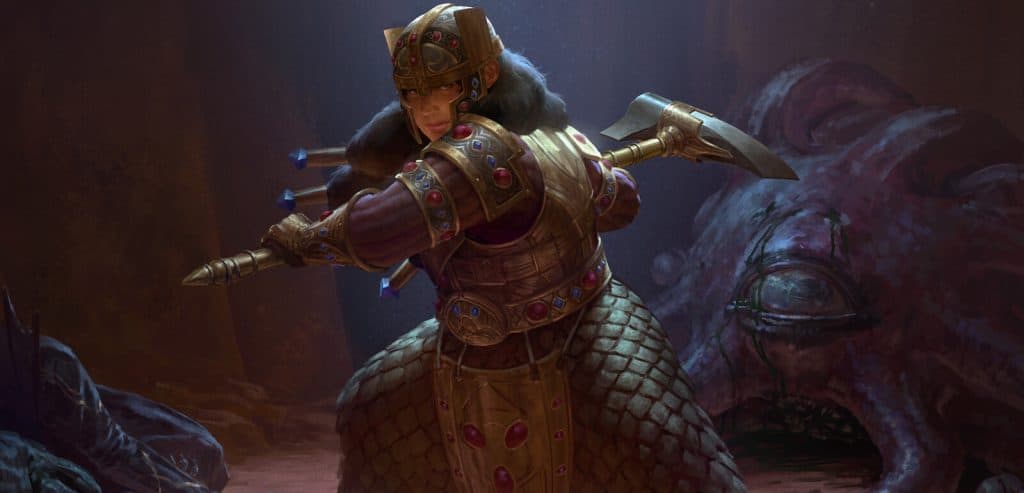
Ranger
Rangers are all about exploration and venturing where few dare to go. They’ve got the skills and some handy magic to help them survive in most environments.
Working well in both combat and as scouts for their party, you don’t want to underestimate what Rangers are capable of!
Similar to the Oath of the Watchers Paladin, the Horizon Walker Ranger is tailor-made for a campaign with plenty of extraplanar threats to contend with.
They’re excellent at finding portals that threats might be using to come to the Material Plane and have plenty of tricks up their sleeve when it’s time for combat.
But we also have to mention the Gloom Stalker Ranger as well.
These Rangers are used to venturing into the darkness and dealing with the terrifying creatures that dwell there. They’re tough as nails and have what it takes to stalk and ambush their targets before silently creeping back into the shadows.
If you’re wanting to play a Ranger that works as a type of hardened survivalist, you’ll be very happy with the Gloom Stalker!
Rogue
Rogues are another class that certainly aren’t spoiled for options that would fit well in a Cosmic Horror campaign!
The Soulknife Rogue immediately comes to mind because of their psionic abilities. Much like we covered with the Fighter, this could possibly be a new development that they’ve been able to adapt to their typical sneakiness and opportunistic fighting style.
But there is a ton of intrigue to be had in a Lovecraftian Horror setting which means it’s actually an ideal opportunity to play an Inquisitive Rogue.
These characters work wonderfully as detectives and bring a keen eye for detail (and knack for being able to read others) to the table.
While they can be a bit difficult to work into the typical D&D game, they’re an incredibly valuable asset to the party in a Cosmic Horror game with plenty of mysteries to solve and cases to crack.
If you’ve ever wanted to play the classic gumshoe-type character in a D&D game, this is your chance!
Sorcerer
Sorcerers are just as fun as they are mysterious, which is to say A LOT!
Pulling in all kinds of unsettling abilities combined with their spellcasting prowess, the Aberrant Mind Sorcerer can definitely make for a fun experience in a Cosmic Horror setting.
However, there is also a certain tragedy to such a character. They’re going up against the same forces that have awoken this power within them.
Rather than rejoicing in their powers as they continue to level up, they might find themselves succumbing to the otherworldly influence that has a hold on them.
What will become of them if they’re able to successfully rid themselves of this influence, however, is anybody’s guess…
But in the meantime, they’re able to use their psionic abilities to aid their party and maybe…. just maybe… survive.
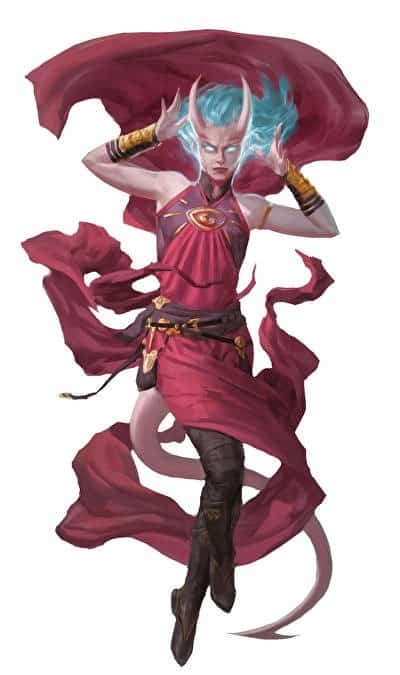
Warlock
Warlocks are a great choice for a D&D 5e Cosmic Horror campaign, especially a Great Old One Warlock. Their ability to summon otherworldly beings and cast spells that warp reality makes them perfect for tackling the horrors of the cosmos.
Additionally, their ability to tap into the dark energies of the universe can lend a truly sinister edge to any campaign.
Though where these GOO-locks really stand out is when given opportunities to use their various mental abilities. A campaign (especially a Cosmic Horror one) with plenty of intrigue and eldritch knowledge to acquire is absolutely perfect for these characters.
Of course, you might want to keep your motives behind acquiring such knowledge particularly secret…
But perhaps, given the desperate nature of the situation your character has found themselves in, they decided to take a certain powerful entity up on an offer.
Becoming a Fiend Warlock, such a character has quite likely traded their soul for the tools needed to possibly survive their current situation.
Whether they think they can negotiate to get their soul back or not, however, is another story…
Wizard
Finally we come to the most studious of all the classes!
Wizards are an excellent choice for a Cosmic Horror campaign because of their powerful magic spells. They have access to spells that can be used offensively, such as fireballs and lightning bolts, as well as a slew of defensive spells.
A wizard from the School of Divination is incredibly useful when it comes to investigating Cosmic Horror. Not to mention, the portent dice that they gain which allow them to change dice rolls can make a huge difference in the most “white-knuckle” of moments.
Depending on if you expect to need more blasting or defensive power, you might also give some consideration to either an Evocation Wizard or an Abjuration Wizard.
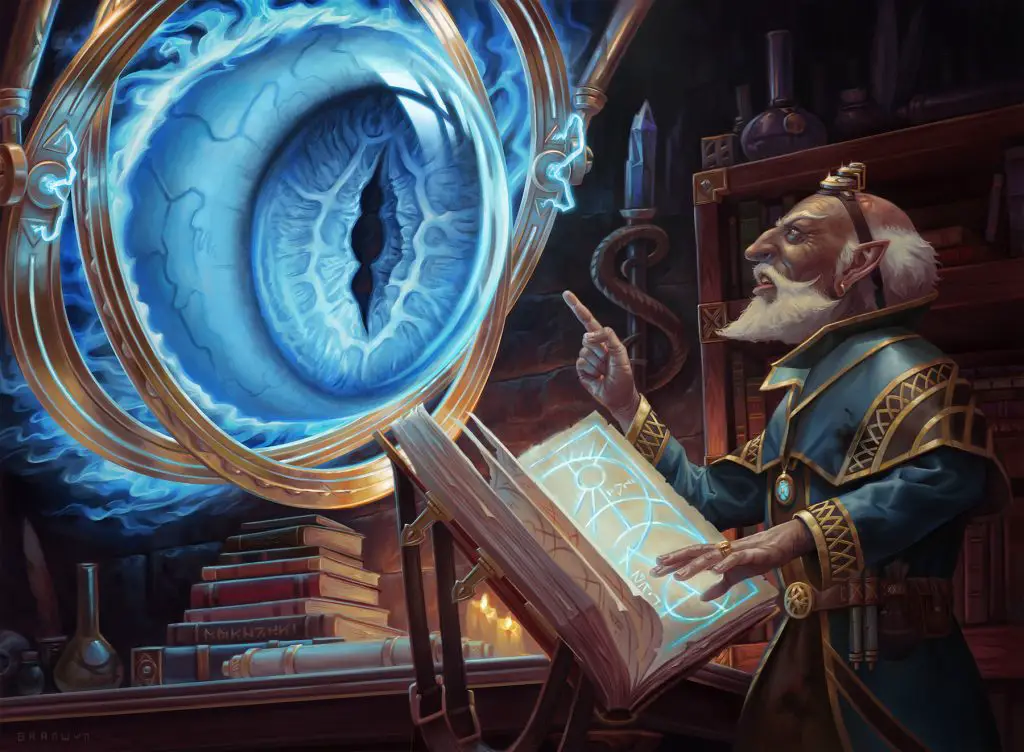
The Influence of Lovecraftian Horror on Dungeons and Dragons
As we’re wrapping up, I thought it would be fun to look at just how intertwined D&D and Lovecraftian Horror are. They certainly aren’t strangers!
The Lovecraftian influence on Dungeons and Dragons has existed since the launch of Original Dungeons in 1974, often referred to as OD&D or the “White Box”.
Lovecraft and his genre of new horror have influenced the game’s monsters, spells, magic items, atmosphere, themes, and lore. From iconic monsters like the Mind Flayer and Gibbering Mouther to big names in D&D’s lore like Tharizdun and Kyuss, Cosmic Horror has played a major role in Dungeons and Dragons.
The original AD&D supplement “Deities & Demigods” actually even had a whole chapter on the Cthulhu Mythos. In fact, the 1e AD&D Dungeon Master’s Guide directly credits H.P. Lovecraft in its infamous Appendix N section.
Almost every 1st edition AD&D module has Lovecraftian influences. Even the Underdark itself is full of Cosmic Horror which dates back to the D series of modules, which also introduced the ever-popular Drow.
Of course, as the game progressed and the lore and material have become more robust, this influence has become more apparent.
These days, newer editions of the game gave us the Far Realm, Spelljammer, Ravenloft, and more monsters, magic, and adventures inspired by this genre of horror.
Conclusion
The main goals for a Cosmic Horror campaign should be to maintain an air of suspense, generate unease in the players, and create a sense that there are forces at work beyond their understanding.
With careful planning and execution, you can develop a campaign that is both chilling and memorable for your players.
Are you up for the challenge?
Whether you’ve played in a Cosmic Horror campaign or are making your own, we’d love to hear about it the comments section below. Let’s chat!
Don’t forget to sign up for the Tabletop Joab newsletter! It’s the best way to get all the latest player guides, DM Tips, news, reviews, and more for D&D 5e right to your inbox!
You can also follow me on Facebook and Twitter.
If you found this article helpful and want to support the site, you can buy me a coffee here! (It’s not expected, but very appreciated!)

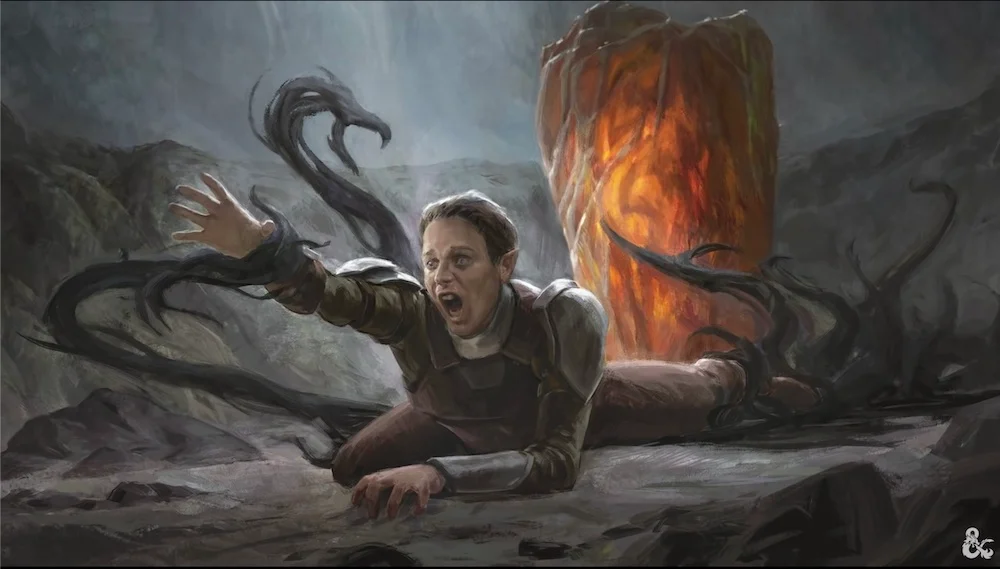
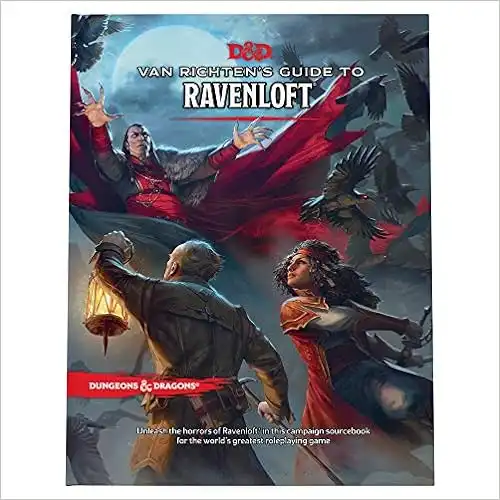

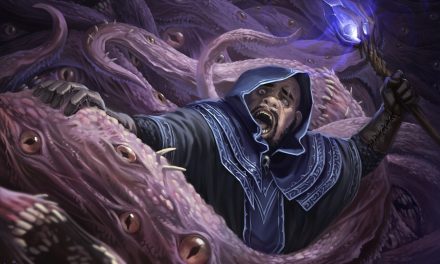
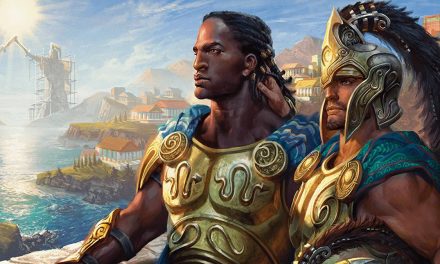
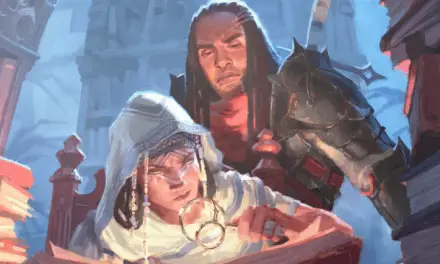
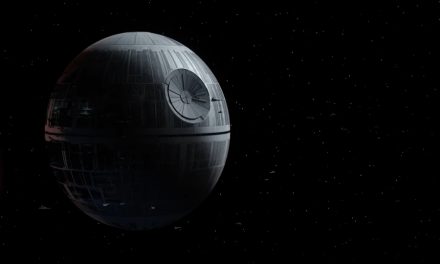




I´ve always been a huge lovecraftian fan, I´ve ran games of Call of Cthulhu a few times before, Now, I´m running Curse of Stradh just recently, still in death house, and i find curious that everywhere you can find CoS under gothic horror, but to me so far Stradh Von Zarovich is a gothic horror dude inside a hybrid Cosmic horror thing, Stradh is not the Big Bad, well it is for the whole thing in the book, but the Dark Powers are the real unreachable Big Bads, Stradh is, just as the PCs, also isolated in Barovia, he just happens to be ancient to the land so he knows his way around, anyway… i was just wondering if my previous experience makes me see everything…. Cosmic.
Hi Pacoman!
That’s a really interesting take and I see exactly what you’re saying! Taking Ravenloft as a whole, it definitely checks many (if not all) of the boxes for what makes a compelling Cosmic Horror setting!
I hadn’t considered that before, but it’s fascinating to think of!
I have not had the chance to play CoS yet, but I hear it is similar to the original Ravenloft module, which I have played more times than I can count. If they are that similar, then yes, I would agree. Vampires, in my opinion, are frequently lumped into Gothic horror, sometimes correctly, but sometimes incorrectly. There can be a ton of crossover between the two genres.
I think it really depends on the overarching worldview presented in the worlds they are placed in. The theme of good and evil and denouncing God tends to fit the Gothic mode perfectly. However, Lovecraft did write about the undead, and “Pickman’s Model” was said to be an influence on Gygax.
Though Lovecraft never wrote of vampires, one of his colleagues, Robert Bloch, did and placed the story in Lovecraft’s universe.
I also find AD&D one big amalgamation of gothic and cosmic horror; it’s interesting looking back on it as an adult. As a child playing, I was not sophisticated enough in my horror knowledge to realize the difference.